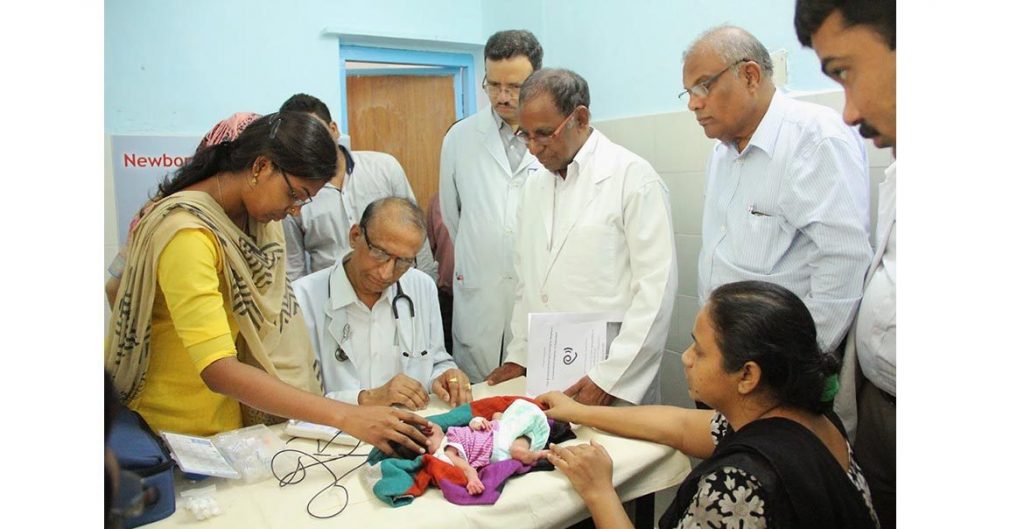Universal Newborn Hearing Screening is a mandatory test to a check a baby’s hearing after birth, before leaving the hospital.
- All babies should have their hearing tested before they leave the hospital
- If a baby is born at home, a hearing test should be completed before he or she is 1 month old.
When a baby fails the screening tests, he or she is referred for more detailed, diagnostic hearing testing. If a hearing loss is found, hearing aids or cochlear implants may be recommended and therapy services are initiated to help the baby learn to listen and speak.
Why is Universal Newborn Hearing Screening Important?
It is important to identify hearing loss as early as possible because babies start learning how to use sound as soon as they are born. Listening in the first months of life prepares babies to speak. These early steps are building blocks for communication.
- Babies start by babbling, using many of the sounds they hear spoken around them
- By their first birthday, babies are already learning what words mean and may be saying a few words
Babies learn to talk by listening to their families talk around them. Imagine that a baby has a hearing loss, but no one knows about it. This can lead to slow development of speech and language, leading to problems in school later in life.
Hospitals regularly screen newborn babies for a number of conditions, such as genetic disorders. Hearing loss is more common than any other problems or conditions that are screened for at birth. About one to three babies out of every 1,000 will be born with a permanent hearing loss.
Two types of newborn hearing screening tests are used to examine hearing in babies. Both of these tests are safe and comfortable.
The two tests can be used separately or together. Both tests are reliable.
- Babies are first screened using OAEs.
- Babies who do not pass on the first OAE test can be given a second test using the ABR.
- Infants who spend more than five days in the neonatal intensive care unit (NICU) should receive the ABR test.
Otoacoustic Emissions Test (OAEs)
A miniature earphone and microphone are placed in the ear, sounds are played and a response is measured.
- If a baby hears normally, an echo is reflected back into the ear canal and is measured by the microphone
- When a baby has a hearing loss, no echo or a reduced echo can be measured on the OAE test
Auditory Brainstem Response Test (ABR)
Auditory brainstem response (ABR) testing is the best test available for newborns and infants up to 6 months of age that can provide information about the softest level of sound the ear can hear.
Sounds are played to the baby’s ears and band-aid like electrodes are placed on the baby’s head to detect responses. Sounds are presented to the ears using small earphones. The electrodes pick up responses from the hearing nerve and a computer measures the responses to identify babies who have a hearing loss.
